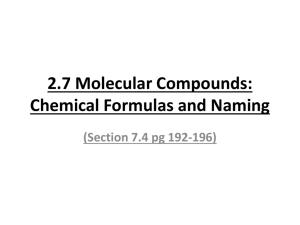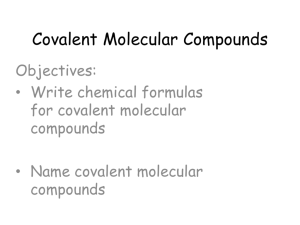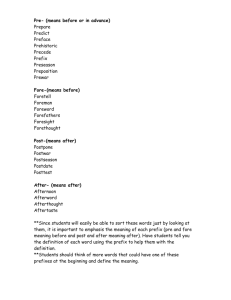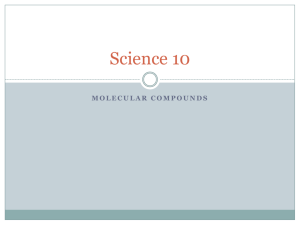Naming Covalent Compounds
advertisement
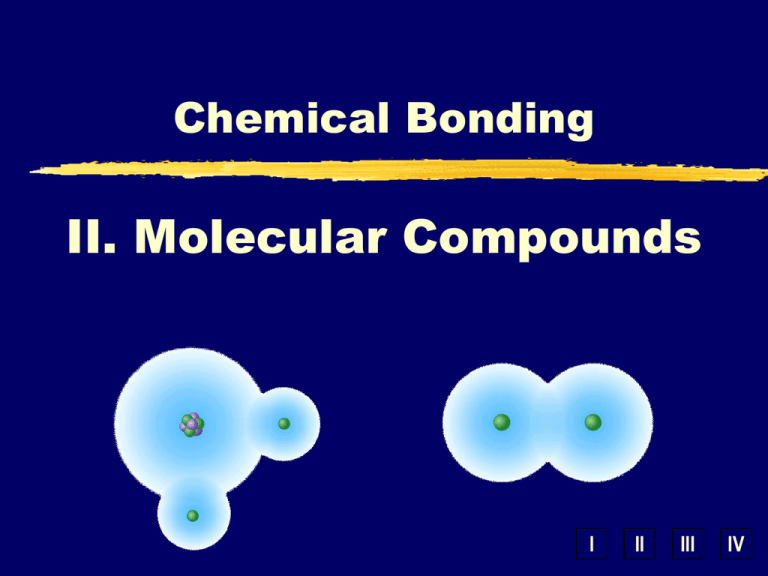
Chemical Bonding II. Molecular Compounds I II III IV B. Lewis Structures Octet Rule Most atoms form bonds in order to obtain 8 valence eFull energy level stability ~ Noble Gases Ne B. Lewis Structures Nonpolar Covalent - no charges Polar Covalent - partial charges + + C. Molecular Nomenclature Prefix System (binary compounds) 1. How do we recognize these? Because they’re made up of 2 nonmetals? Where are nonmetals found??? 2. Add prefixes to indicate # of atoms. Omit mono- prefix on first element. 3. Change the ending of the second element to -ide. C. Molecular Nomenclature PREFIX monoditritetrapentahexaheptaoctanonadeca- NUMBER 1 2 3 4 5 6 7 8 9 10 Special Rules with Mono If there is only one of the first element, then the prefix mono is not used. If there is only one of the second element, then the prefix mono is necessary. Ex. CO – Carbon Monoxide CO2 – Carbon Dioxide C2O – Dicarbon Monoxide Also…. There is no reducing for covalent compounds. What you see is what you get. If you reduced, you would change the chemical formula and ratio of the elements in the bond….Not good…. C2H4 - Dicarbon Tetrahydride CH2 - Carbon Dihydride N3O6 - Trinitrogen Hexaoxide NO2 - Nitrogen Dioxide C. Molecular Nomenclature CCl4 carbon tetrachloride N2O dinitrogen monoxide SF6 sulfur hexafluoride C. Molecular Nomenclature arsenic trichloride AsCl3 dinitrogen pentoxide N2O5 tetraphosphorus decoxide P4O10 C. Molecular Nomenclature The Seven Diatomic Elements I2 Br2 Cl2 F2 O2 N2 H2 H N O F Cl Br I
